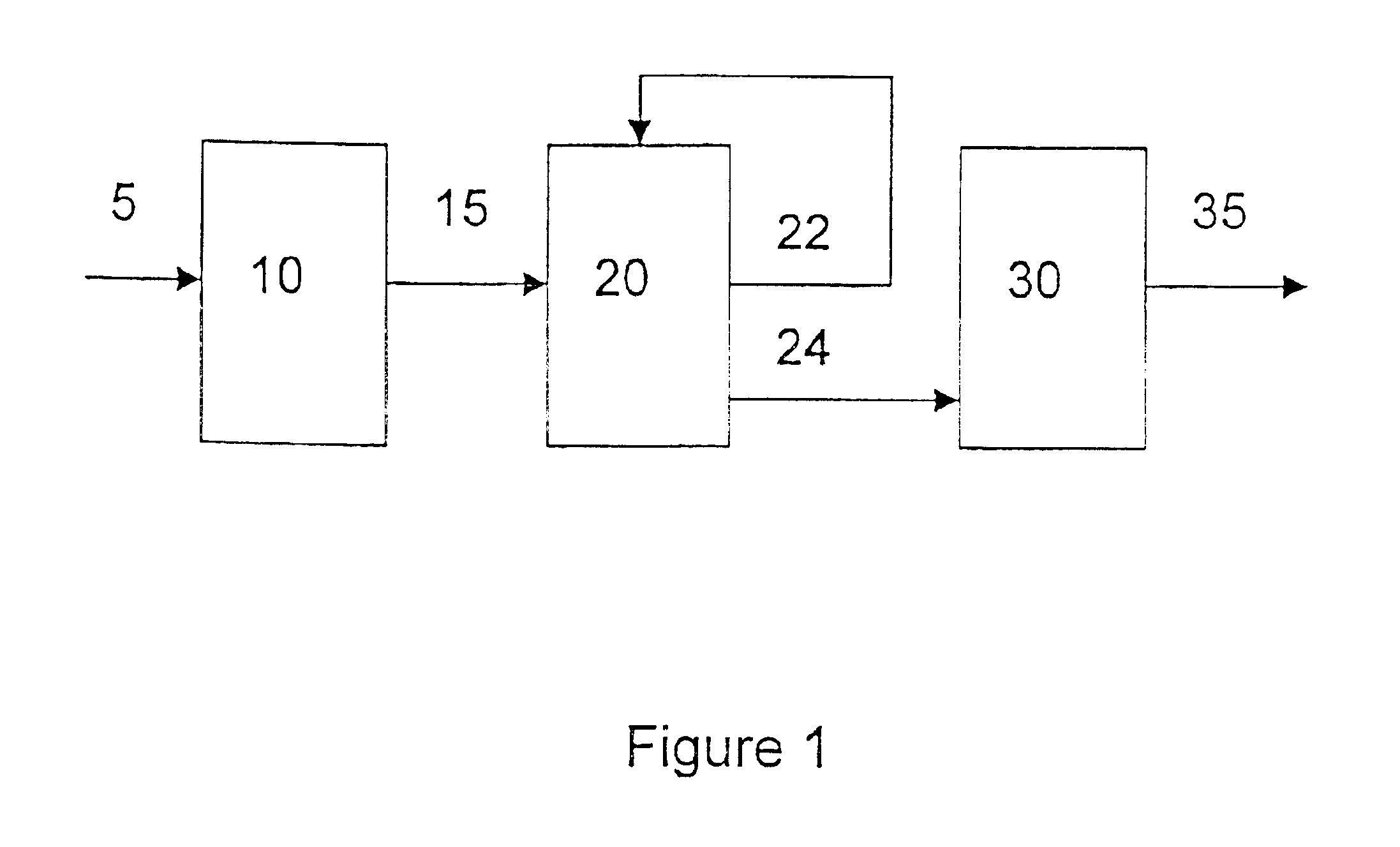Process for making a lube base stock from a lower molecular weight feedstock in a catalytic distillation unit
a technology of catalytic distillation and lube base stock, which is applied in the direction of lubricant composition, separation process, organic chemistry, etc., can solve the problems of not all catalytic reactions are suitable and the actual commercial utilization of this technology is delayed, so as to achieve adequate product stability, high lube base oil yield, and adequate reaction rate
- Summary
- Abstract
- Description
- Claims
- Application Information
AI Technical Summary
Benefits of technology
Problems solved by technology
Method used
Image
Examples
examples
The invention will be further illustrated by following examples, which set forth particularly advantageous method embodiments. While the Examples are provided to illustrate the present invention, they are not intended to limit it.
In one specific embodiment, as shown in FIG. 1, an olefinic feedstock 5, with boiling points within the range of from 258 to 650 F, and with an olefin content of from 10% to 50%, is selectively hydrogenated in a selective hydrogenation zone 10 to saturate at least a portion of any diolefins present while not saturating most of any monoolefin present, producing a selectively hydrogenated olefinic feedstock 15. This selectively hydrogenated olefinic feedstock 15 is contacted with an oligomerization catalyst in a catalytic distillation unit 20 to produce a product having a number average molecular weight at least 20% higher than the olefinic feedstock. That product is separated in the catalytic distillation unit 20 into a light byproduct fraction 22 and a heav...
PUM
| Property | Measurement | Unit |
|---|---|---|
| boiling points | aaaaa | aaaaa |
| pour point | aaaaa | aaaaa |
| pour point | aaaaa | aaaaa |
Abstract
Description
Claims
Application Information
 Login to View More
Login to View More - R&D
- Intellectual Property
- Life Sciences
- Materials
- Tech Scout
- Unparalleled Data Quality
- Higher Quality Content
- 60% Fewer Hallucinations
Browse by: Latest US Patents, China's latest patents, Technical Efficacy Thesaurus, Application Domain, Technology Topic, Popular Technical Reports.
© 2025 PatSnap. All rights reserved.Legal|Privacy policy|Modern Slavery Act Transparency Statement|Sitemap|About US| Contact US: help@patsnap.com

